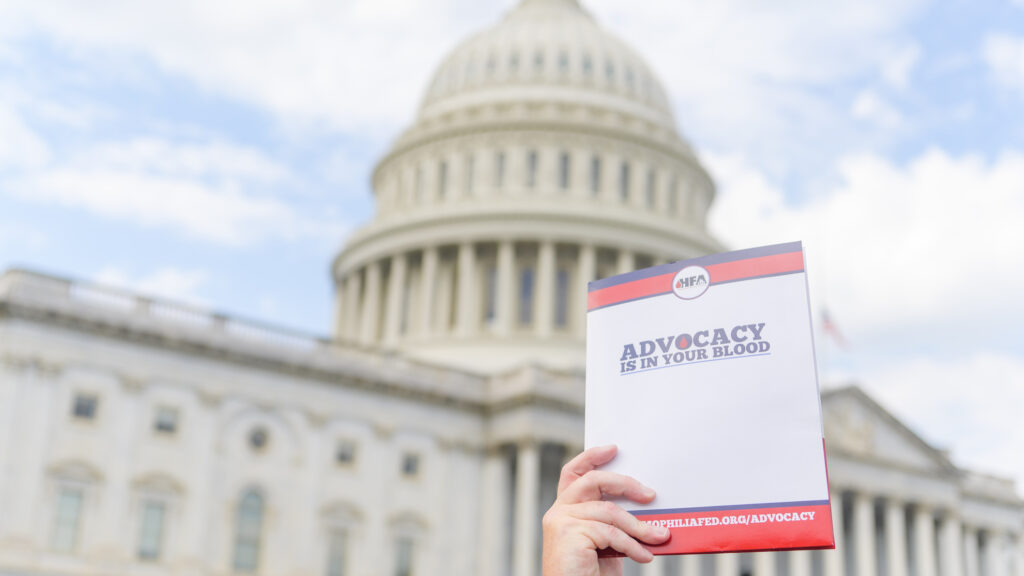States can resume Medicaid terminations in April, but most are holding back
The U.S. Department of Health and Human Services (HHS) has notified state Medicaid programs that the COVID-19 public health emergency (PHE) will formally end on May 11, 2023.
The PHE has been continuously renewed in 90-day increments since first declared by HHS in January 2020. The declaration, along with initial COVID relief legislation that Congress quickly passed, gave state (and territorial) Medicaid programs temporary flexibilities and extra federal funding to assume the expected increase in enrollment during the pandemic.
The 6.2 percent bump in Medicaid funding came with the condition that states could not make any changes to Medicaid eligibility during the PHE, even if enrollees no longer met eligibility criteria. This caused Medicaid enrollment to swell by 33 percent nationwide (or as much as 80 percent in some states).
Under pressure from state Medicaid directors, Congress agreed late last year to let states restart the Herculean process of reviewing eligibility for all of their Medicaid as early as February of this year and terminate coverage as early as April, even if the PHE was extended past those dates (see State of the States, Winter 2022). Congress also acted to phase down the extra Medicaid funding over time, rather than cutting it off abruptly. This reduces the financial incentive for states to rush their processes and risk a higher rate of erroneous terminations. However, in order to continue receiving the enhanced funding, states must demonstrate to the federal Centers for Medicare and Medicaid Services (CMS) that they are making multiple efforts to try to contact Medicaid enrollees before terminating coverage.
Some states (8) have elected to start sending out eligibility verification requests to enrollees as early as possible in February and five plan to start terminating coverage as soon as April 1st (AZ, AR, ID, NH, SD). However, most states (28) have instead elected to wait until April to start the process and will not terminate coverage for those deemed ineligible until at least June. Nine of these states (including CA and NY) will wait until July to terminate coverage, while Oregon will wait until October.
CMS is still giving states 12 months to start the redetermination process for all Medicaid enrollees (and complete for everyone within 14 months). The agency has urged states to use this “grace period” to spread out their redeterminations to no more than 1/9 of caseload per month—avoiding haste and minimizing the chance of wrongful terminations. At least 43 states currently plan to do so. However, there are still five states seeking to process all redeterminations in 9-12 months and one state (Arkansas) that insists on doing so in less than nine months.
HFA and coalition partners remain very concerned about projections that as many as seven million of the 16 million Medicaid enrollees projected to lose coverage during this “unwinding” will be wrongly terminated for administrative reasons despite still being eligible. This includes enrollees who moved during the pandemic and failed to update their contact information with Medicaid or otherwise did not respond promptly to verification requests from Medicaid.
Given that national surveys show that up to two-third of Medicaid enrollees remain unaware that the redetermination process is resuming, HFA and coalition partners have been actively working to get the word out to consumers and providers, creating an “unwinding” toolkit and other educational resources.
The ability of states to complete all redeterminations and mitigate against erroneous coverage losses will vary greatly by state, depending on their staffing resources, technological capabilities, and total enrollment. For example, states like Minnesota that still lack online enrollment capability could experience exceptionally high rates of erroneous terminations. Furthermore states that saw the largest spikes in Medicaid enrollment during the pandemic (CA, FL, IL, NY, TX) could see more than one million total enrollees lose coverage.
North Carolina becomes 40th state to expand Medicaid under the ACA.
On the 13th anniversary of the Affordable Care Act (ACA), the North Carolina legislature overwhelmingly approved legislation subsequently signed by Governor Roy Cooper (D) that expanded Medicaid for the roughly 600,000 residents earning up to 138 percent of the federal poverty level (approximately $19,000 for an individual).
The effective date of the measure (H.B. 76) is contingent on approval of the state budget later this year but resolves the six-year impasse between the Governor and Republican holdouts against the expansion. It is expected to bring in more than $141 million in federal funds to North Carolina over the next few years.
Following South Dakota’s voter-mandated Medicaid expansion late last year (see State of the States, Fall 2022), there are now only ten states yet to fully expand their Medicaid programs to all low-income adults, as permitted by the ACA. Roughly two million uninsured live in just three of these states (FL, GA, and TX); they remain trapped in the coverage gap between existing Medicaid eligibility levels and the lower threshold for ACA premium tax credits (that start at 100 percent of poverty).
New Hampshire is expected to make its Medicaid expansion permanent after unanimous approval in the state Senate of needed legislation (S.B. 263). The expansion currently requires legislative reauthorization by the end of 2023 (and every five years thereafter).
States have also continued to expand Medicaid to other populations. New Mexico enacted H.B. 400 last month, which authorizes the state to submit a study and design of a Medicaid buy-in program that would open Medicaid to everyone earning above the ACA expansion threshold (138 percent of poverty) and charging sliding-scale premiums based on income. However, the buy-in would require additional legislation to be funded and implemented by 2026.
Over 30 states (most recently Oklahoma) have exercised the option authorized by Congress in the American Rescue Plan Act of 2021 to expand Medicaid post-partum coverage for up to 12 months. (Medicaid post-partum coverage in many states had been limited to 60 days or less).
Connecticut, Maine, New Jersey, Rhode Island, and Vermont are also now using state funds to cover children regardless of immigration status (legislation is advancing in Connecticut to extend the upper age limit from 12 to 18). Oregon and Vermont are using state funds to newly cover some adults who are not eligible for Medicaid due to immigration status. Pending legislation in Nevada would expand Medicaid to both adults and children who are non-citizens.
New Mexico set to become 17th state to prohibit copay accumulator adjusters.
Governor Michelle Lujan Grisham (D) is expected to shortly sign into law in New Mexico broad legislation that includes consumer protections requiring health plans credit the full value of third-party copay assistance to the annual cost-sharing obligations for subscribers.
S.B. 51 (which was proposed by the governor) would make New Mexico the 17th state (plus Puerto Rico) to prohibit the use of such copay accumulator adjustment programs (CAAPs) and the first to do so in 2023. However, the legislation failed to include a “savings clause” that would extend those protections to enrollees in high-deductible health plans (at least once they satisfied the minimum HDHP deductible of $1,400 set by federal law). The “savings clause” has been separately enacted by several states that initially passed CAAP laws (including IL, LA, OK, and VA) and HFA urges New Mexico lawmakers to do the same next session.
North Dakota may be on the verge of following New Mexico as the 18th state with CAAP prohibitions after the Senate passed H.B. 1413 in late March following earlier House passage (despite committees in both chambers recommending it not pass). However, it is not yet clear whether Governor Doug Burgum (R) will sign the bill into law.
CAAP legislation remains pending in at least ten other states this session including California, Florida, and Texas. Bills already died in committee in Oregon and Utah. However, they have advanced in Missouri (where H.B. 442 overwhelmingly passed the House), Texas (where H.B. 999 cleared committee), Colorado (where S.B. 195 received it first hearing), and the District of Columbia (where B25-141 cleared committee). In Florida, a committee is scheduled to hear a CAAP bill next week (S.46) for the first time in four years while California A.874 will receive a hearing in late April.
Despite the success in getting state protections enacted, HFA has received reports that state-regulated health plans in at least two of these states (OK and TN) are continuing to apply copay accumulators on subscribers. Please report any such violations of existing CAAP laws to your respective state insurance commissioner and/or advocacy@hemophiliafed.org.
Several states seek to transition to full control over ACA Marketplace.
At least three states are considering legislation this session that would transition their ACA Marketplaces from to full state control.
The Georgia bill (S.B. 65) backed by Governor Brian Kemp (R) has already passed the House. It was introduced after the Biden Administration suspended the federal approval Georgia previously received to leave the federally-facilitated Marketplace (through www.healthcare.gov) and not operate a Marketplace at all. The state has already created its own Georgia Access platform, which is serving as an “informational website” until the transition is complete. (Nearly 900,000 Georgians enrolled in Marketplace coverage for 2023—by far a record for the state).
In Texas, where the federal ACA Marketplace currently serves a record 2.4 million enrollees, legislation sponsored by House Insurance Committee chair Tom Oliverson (R) (H.B. 700) received its first committee hearing this week. It would fully transition the Marketplace to state control and authorize federal waivers to create state-funded premium tax credits (on top of those provided under the ACA). However, it also would allow for waivers to offer “junk” plans that do not comply with ACA standards (which the Biden Administration is not likely to approve, especially if state subsidies can be used to purchase those plans).
The Illinois bill (H.B. 1229) sponsored by House Majority Leader Robyn Gabel (D) would transition the Marketplace to full state control by 2026 but remains in committee. The state is one of only six with a “partnership” Marketplace that uses the federal www.healthcare.gov platform but retains state control over other functions.
States already control their own ACA Marketplaces in at least 18 states (see State of the States, Fall 2021). Virginia expects to complete its previously-approved transition to a state-based Marketplace for the 2024 plan year.




